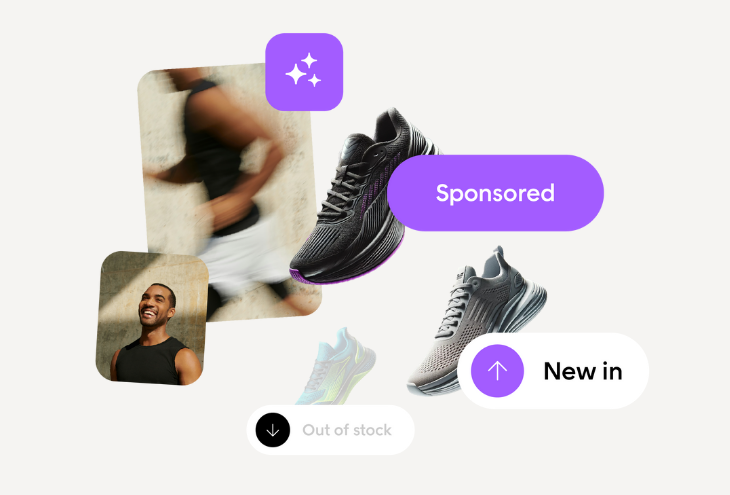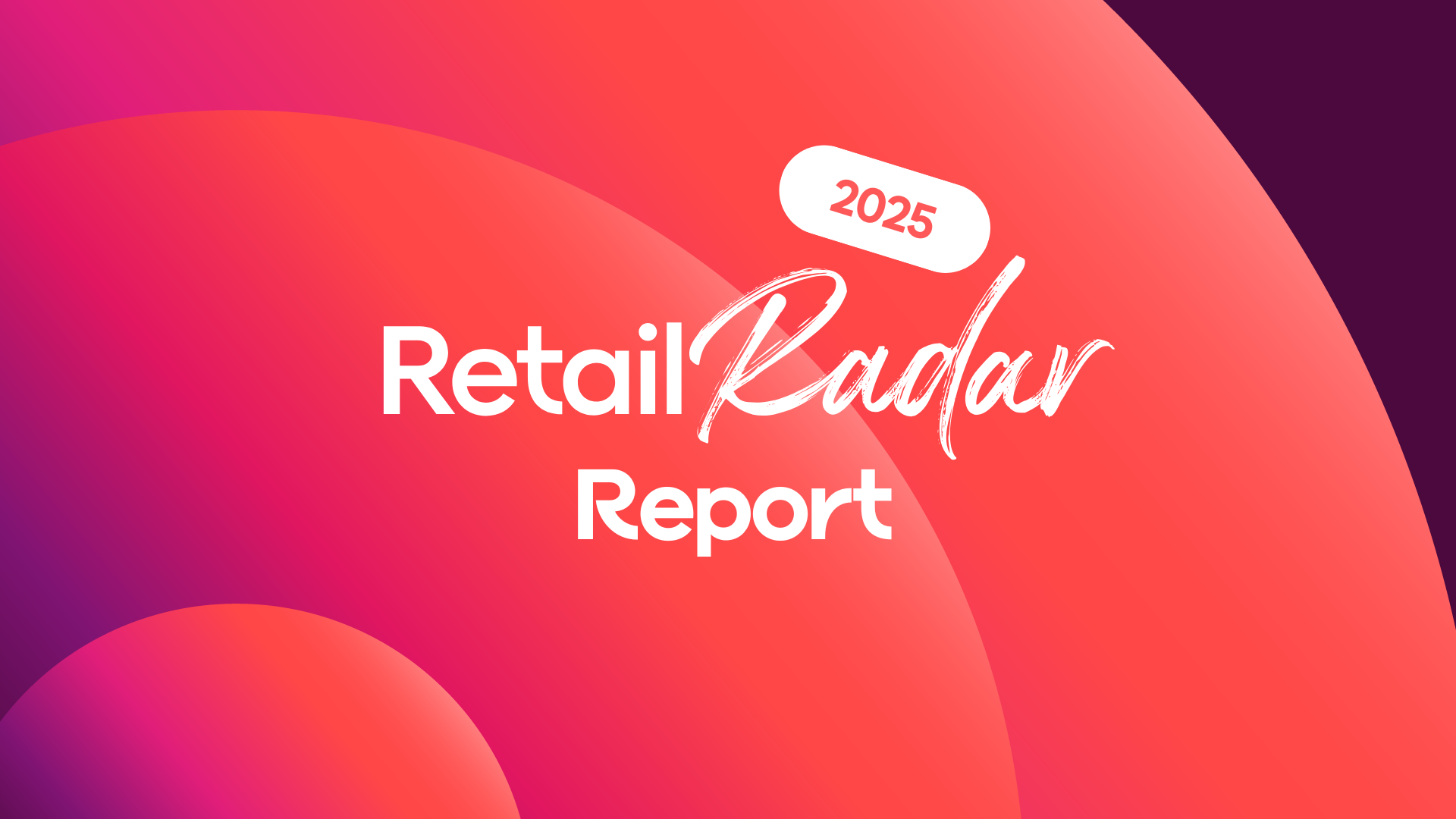Knowing how to reduce customer returns is key to running a profitable e-commerce business.
Online shopping is easy, and so is returning items. But every return adds cost, wastes time, and negatively impacts customer satisfaction.
The Voyado Retail Index, based on data from 2.6 million Swedish loyalty program members, had some revealing data:
- Women return more items online than men, while men lead in-store.
- Customers aged 35–44 are the most likely to return online purchases at rates 72% higher than average.
Check out more interesting insights across the Nordics, the UK, Benelux, and Germany in our 2025 Retail Radar.
You’ll learn practical ways to reduce returns, improve product pages, and help online shoppers make more confident decisions.
What causes high return rates (and how to reduce them)
Customer returns are a normal part of retail, but too many can hurt your profits, slow down fulfillment, and lead to customer dissatisfaction.
Returns usually happen when something in the customer journey breaks down. Maybe the sizing was off. Maybe the item didn’t match the product page. Or maybe the shopper bought three versions of the same item, planning to send two back.
Here are some of the most common reasons customers return items:
- Incorrect sizing or poor fit
- Unclear or misleading product descriptions
- Low product quality or damaged goods
- Buying multiple sizes “just in case”
- Slow or complicated returns process
- Items not matching customer preferences or expectations
These returns cost more than just shipping. They affect customer satisfaction, slow down reverse logistics, and make it harder to keep future customers engaged and loyal.
The good news is that most of these problems are preventable.
We’ll walk through strategies to reduce returns from improving your product pages to encouraging smarter buying decisions and using customer data to personalize the experience.
Improve product pages to reduce mismatched expectations in 3 steps
A lot of returns happen simply because the product wasn’t what the customer expected.
That might mean the colour looked different in person, the material felt cheaper than imagined, or the size wasn’t quite right. These are minor issues, but they create customer frustration and drive up your return rates.
Improving your product pages is one of the easiest ways to prevent these problems before they start.
Step 1: Write clear, accurate product descriptions
Customers rely on your descriptions to make informed purchase decisions. If the copy is vague, overly salesy, or missing essential details, you’re more likely to get the item sent back.
Instead, use plain language to describe:
- How the product fits or feels (e.g., soft, structured, lightweight)
- What to expect in terms of quality and use
- Whether it runs small, large, or true to size
Be honest. Setting the right expectations builds customer confidence and helps reduce returns.
Step 2: Use high-quality images and videos
Visuals make a big difference. One of the easiest ways to improve customer satisfaction is to clearly and accurately display products.
Be sure to include:
- Multiple angles and close-up shots
- High-quality images with realistic colours
- Models of different body types, heights, and sizes
- Optional: short videos showing the product in use
This helps online shoppers get a better understanding of what they’re buying, so they’re less likely to be surprised or disappointed when it arrives.
Step 3: Add trust signals to the page
Don’t hide important info like your returns policy or sizing help. Make it easy to access (ideally without clicking away from the product page).
You can also add:
- Fit feedback (“80% say this fits true to size”)
- Product badges like “Frequently returned – check sizing”
- Star ratings, customer feedback, and UGC for extra social proof
Helping customers feel more confident at this stage reduces the chance they’ll need to return anything later on.
By improving product pages, you’ve already tackled one of the most common causes of returns: unmet expectations.
But what if you could go a step further and help each customer choose the right fit before they even add something to their cart?
Let’s look at how using customer data can make sizing and fit recommendations more accurate, personal, and effective.
Use data to personalize sizing and fit recommendations
One of the biggest drivers of e-commerce returns is incorrect sizing. And it’s easy to see why. Without a fitting room, many customers take their chances, order multiple sizes, and plan to return what doesn’t fit.
You can reduce returns and save time for everyone by using the data you already have to personalize the experience.
If your system remembers what sizes a customer has previously bought and what they’ve returned, you can start making smarter suggestions. For example:
- “You bought this brand in size M last time.”
- “Runs small — we recommend one size up.”
- “Customers with a similar body type preferred size L.”
This type of guidance fosters trust and helps customers feel more confident about their choice. And when shoppers feel confident, they’re less likely to order three sizes of the same item — or return it at all.
You can also let customers save their size and fit preferences in their profile. That way, you can surface better product recommendations and even hide products that likely won’t fit.
These kinds of personalized touches are simple to automate using customer data and tools like Voyado’s CDP.
A personalized fit is a strong first step, but what happens when something still needs to be returned?
Let’s look at how your returns process itself can help reduce repeat returns and improve customer loyalty.
Turn your returns process into a customer confidence builder
Returns aren’t always a bad sign. A clear and flexible returns process can actually help customers feel more confident when shopping and make them more likely to return.
But if the process is slow, confusing, or full of hidden conditions, customers get frustrated. And frustrated customers are less likely to buy from you again.
Here are three ways to make your returns process work for you, not against you:
1. Be upfront about your return policy
Place return details somewhere visible on the product page and during checkout.
Include things like:
- How long customers have to return an item
- Whether items need to be unused or in original packaging
- Whether you offer free return shipping or charge a fee
When customers know what to expect, they’re more likely to make informed choices and less likely to return something out of surprise or confusion.
2. Offer flexible return options
A one-size-fits-all policy doesn’t work for every customer. If possible, give shoppers the option of:
- A full refund
- Store credit with a small bonus
- An exchange for a different size or colour
This helps reduce refund requests and increases the chance of a future purchase, especially if store credit is the default.
3. Make the post-purchase journey seamless
A returns portal makes it easy for customers to manage their returns without needing to contact support. They can:
- Track the return status
- Download return labels
- Get confirmation when the item arrives at your fulfilment centre
This improves the customer experience and reduces support tickets, saving your team time and keeping shoppers informed.
While your returns process can support better experiences after the purchase, the real magic happens when you shape customer behavior before they click “buy.”
Next, let’s explore how incentives can help reduce returns, without adding pressure.
Use smart incentives to encourage fewer returns
Not every return comes from a bad experience. Sometimes it’s just habit — like ordering three sizes and keeping one.
But with the right incentives, you can gently nudge customers toward more thoughtful buying decisions.
Reward customers with low return rates
People love to feel like they’re doing something right, and rewards can reinforce that.
Consider offering:
- Loyalty points or vouchers to customers who rarely return items
- “Low return rate” badges or milestones in their account
- Exclusive perks for those in your low-return segment
This kind of recognition turns positive behavior into a benefit, rather than making returns feel like a penalty.
Show them the impact
Returns don’t just cost your business, they affect the environment, too. Some brands now show how much CO₂ emissions are linked to frequent returns.
You don’t need a full carbon calculator to get the message across.
Even a simple message like “Returning fewer items helps reduce shipping waste” can help customers pause and think twice before buying multiple versions of the same item.
Frame it as a benefit, not a restriction: The goal here isn’t to shame customers, it’s to help them make better choices.
Use your messaging to:
- Reinforce the value of getting it right the first time
- Highlight perks for “smart shoppers”
- Position exchanges as a faster, smoother alternative to refunds
These small shifts in framing can make a big difference in how engaged and loyal your customers feel.
Of course, not every return is casual. Some customers turn return habits into a pattern, and that can start to cost your business.
In the next section, we’ll look at how to spot and manage serial returners without hurting your brand.

Spot and segment serial returners early
Some customers return items occasionally, and that’s perfectly normal.
But others develop patterns that start to hurt your bottom line. Maybe they order multiple versions of the same item, use products once before returning them, or consistently send back goods across different categories.
These behaviors cost your business time, money, and stock you can’t always resell.
The key isn’t to ban returns — it’s to understand who’s returning what, and why.
Use data to identify patterns
Start by looking at return behavior over time. For example:
- Customers who regularly order multiples of the same item (size, colour, or spec)
- High return rates across specific product categories (like electronics, beauty, or homeware)
- Frequent returners who rarely keep more than 10% of their orders
With the right data, you can identify these patterns early and create targeted segments, helping you reduce return costs while maintaining a positive customer experience.
Take action without damaging the customer relationship
Once you’ve identified serial returners, you can choose how to respond. A few options:
- Exclude them from certain promotions or free return offers
- Offer store credit only, rather than refunds
- Encourage exchanges or in-store returns instead
- Flag high-risk behavior for manual review if needed
The goal isn’t to punish but to reduce return abuse while keeping good customers engaged.
Build smarter return policies for edge cases
Not all returns are equal, and not all of them should be handled the same way.
To reduce unnecessary costs and protect margins, it’s worth building targeted return policies for high-risk products or behaviors.
For example:
- Limit returns on final-sale or seasonal items
- Shorten return windows, like Zalando did (from 100 to 30 days)
- Ask for product photos before approving high-value returns
- Encourage free in-store returns while charging for online ones
In-store returns not only cost less to process, but they also create foot traffic. Some studies suggest that up to 80% of customers who return to the store spend that money again on the spot.
And here’s a trend to watch: Return rates often spike just before major sales.
As sales campaigns start earlier (think Black November instead of Black Friday), some customers send back full-price items to repurchase them at a discount.
Without clear policies in place, this pattern can quietly eat into your margins.
Smarter return rules can help curb the edge cases and protect the profitability of your busiest sales periods.
Let customers take ownership with responsible returns
Most customers don’t realize how much damage returns can cause to your business or the environment. Between packaging waste, reverse shipping, and unsellable stock, even a single return can have a bigger impact than it seems.
But when shoppers are informed, they’re often willing to act differently.
Educate customers during the shopping journey
One of the simplest ways to reduce e-commerce returns is to raise awareness at key touchpoints before the customer clicks “buy.”
For example:
- Add microcopy near the “Add to Cart” button:
“Returns create extra CO₂ from repackaging and reverse shipping. Please check your size before ordering.”
- Include a reminder at checkout:
“Buying multiple sizes? Try our fit guide to find the right one the first time.”
These gentle prompts don’t block the sale; they help customers pause and make a more informed decision.
Offer optional climate compensation
Some retailers now let shoppers offset the environmental cost of their return by contributing to carbon removal or reforestation.
This doesn’t need to be a big campaign. Even a simple “Add €1 to offset the carbon from a potential return” can make customers think twice.
It’s not about shifting blame. It’s about inviting customers into the bigger picture and offering small choices that align with their values.
Celebrate responsible shopping habits
Just like you can reward low-return customers with loyalty points, you can also spotlight those who consistently make thoughtful purchases.
That might look like:
- “Smart shopper” badges for accounts with low return rates
- Public-facing sustainability messages in order confirmation emails
- A visible counter for CO₂ saved or items not returned
These gestures aren’t just good for the environment; they can also build stronger customer loyalty.
Responsible returns are one part of the picture. But what ties all of this together, from smarter sizing to return tracking and customer segmentation, is the tech behind it.
Let’s look at how Voyado helps retailers reduce returns and create better customer experiences.
How Voyado helps you reduce returns (and build loyalty)
Reducing returns isn’t just about better product pages or smoother logistics. It’s about knowing your customers and using that insight to personalize their journey from first click to final delivery.
Voyado gives you the tools to make that happen.
See who’s returning what (and why)
With Voyado, you can track return behavior by customer and category. Then, you can use the transaction data in Engage to understand trends across product types if that data is available.
Spot patterns like:
- High return rates for specific items
- Customers who frequently return certain brands
- New customers who show early signs of return-heavy behavior over time
This helps you understand what’s really driving returns and gives you the data to fix it.
Segment and personalize based on return history
Use Voyado’s customer data platform to create smart segments based on return behavior. For example:
- Send proactive sizing tips to customers who’ve returned similar items
- Offer exchanges instead of refunds for frequent returners
- Exclude serial returners from sensitive campaigns
You can also tie this to loyalty, offering exclusive perks to customers who make confident, low-return purchases.
Automate post-purchase journeys
Returns are part of the customer experience, but this means they’re also a chance to build trust.
With Voyado, you can:
- Trigger follow-ups based on return status
- Offer store credit with time-sensitive discounts
- Automatically invite feedback on returned items
These small touchpoints help reduce future returns while showing customers you’re paying attention.
Turn insight into action and better results
When you connect your e-commerce, CRM, and returns data, you can take a smarter approach across the board.
And with Voyado’s automation, segmentation, and analytics built for retail teams, it’s easy to do.
Ready to reduce returns and increase customer loyalty? Let’s talk. Our team can walk you through how Voyado makes it simple to connect data, automate smarter journeys, and act on what your customers really need.
FAQs
What causes the most customer returns in e-commerce?
Common causes include incorrect sizing, unclear product descriptions, and items that don’t match customer expectations.
Other reasons include delayed delivery, damaged goods, or customers ordering multiple sizes of the same item “just in case.” Improving your product pages and returns process can significantly reduce returns and improve customer satisfaction.
How can I reduce return rates without hurting the customer experience?
Start by focusing on clarity. Make product pages more detailed and visual, offer accurate size recommendations, and ensure customers feel confident when buying.
A smooth returns process (with options like exchanges or store credit) can improve the experience, especially for future purchases.
Should I offer free return shipping?
Free return shipping can increase online sales and customer confidence, but it comes at a cost.
Some retailers offer it only to loyalty members or first-time buyers. Others set conditions, such as only covering shipping if the customer exchanges instead of asking for a refund.
What is a returns portal, and do I need one?
A returns portal is an online tool that lets customers initiate and track returns without contacting support.
It improves the post-purchase experience, reduces customer frustration, and makes reverse logistics easier for your team. If you manage a high volume of e-commerce returns, it’s a worthwhile investment.
How do I deal with customers who return everything?
These are often called serial returners.
You can segment them based on their behavior and apply specific policies, such as offering store credit instead of a full refund, setting item limits, or excluding them from certain promotions. The key is to manage costs without damaging your brand.
 Voyado Engage
Voyado Engage  Voyado Elevate
Voyado Elevate  Powered by Bonnie AI
Powered by Bonnie AI 










